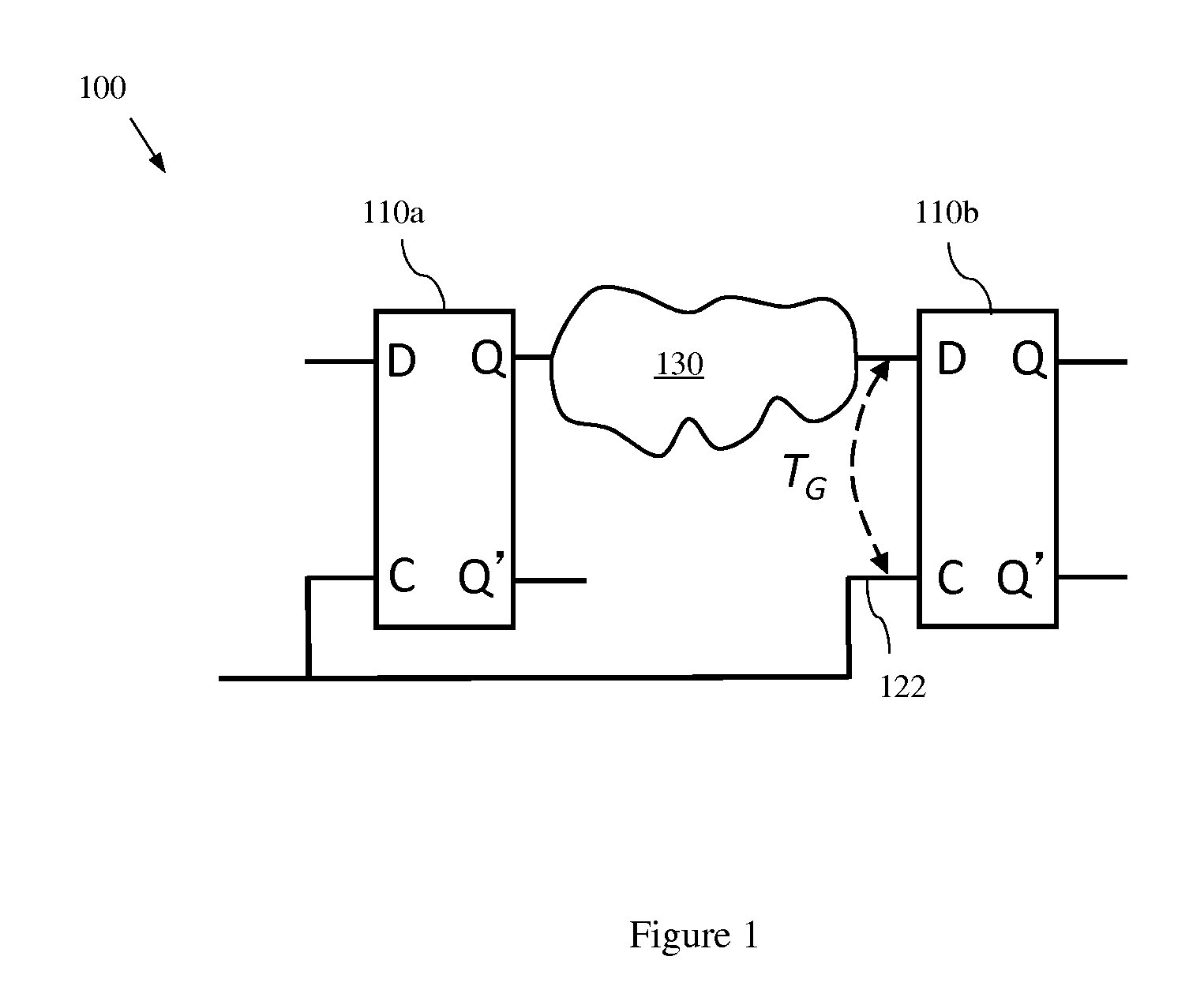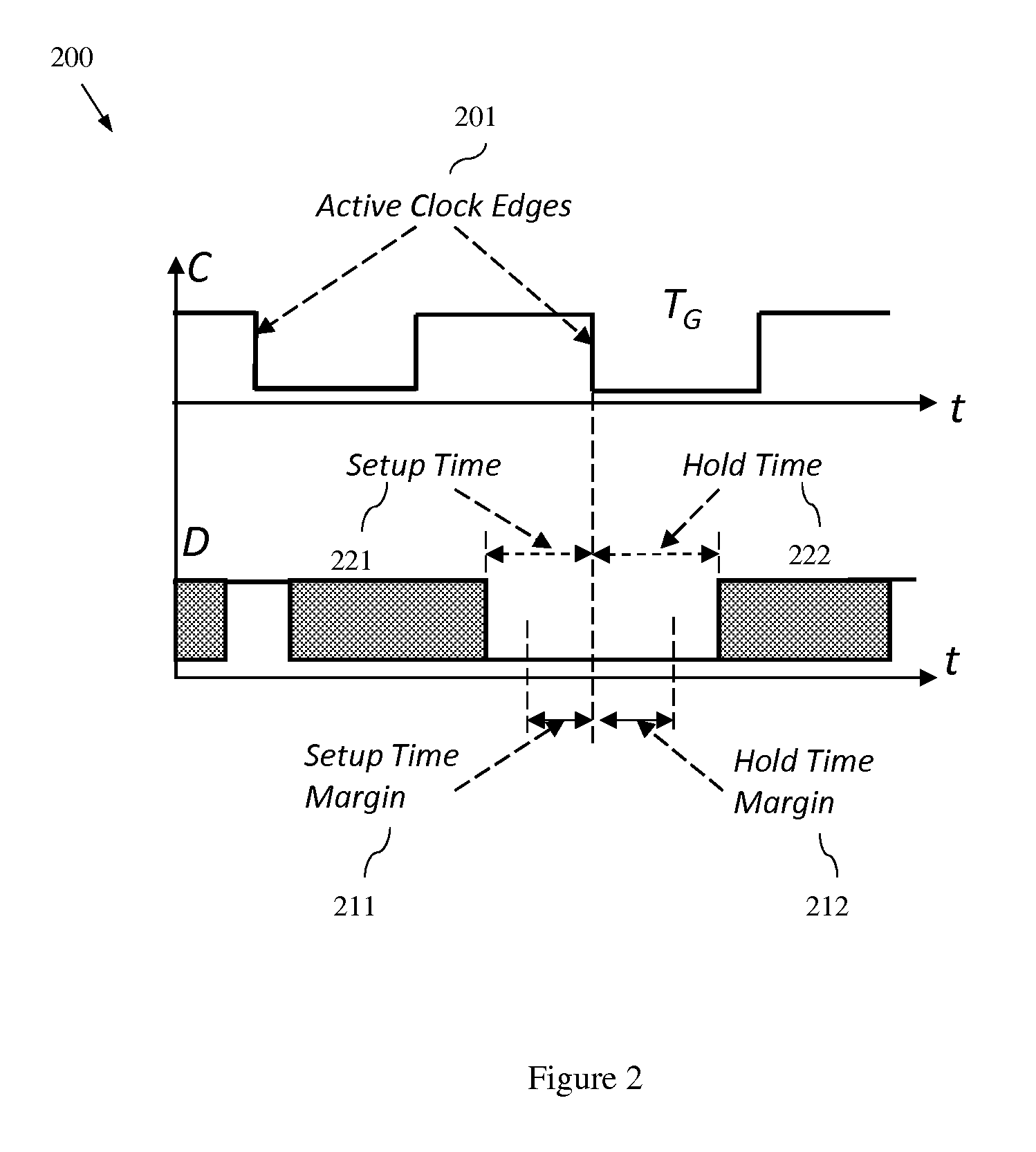Method, system and program storage device for performing a parameterized statistical static timing analysis (SSTA) of an integrated circuit taking into account setup and hold margin interdependence
- Summary
- Abstract
- Description
- Claims
- Application Information
AI Technical Summary
Benefits of technology
Problems solved by technology
Method used
Image
Examples
Embodiment Construction
[0019]The embodiments herein and the various features and advantageous details thereof are explained more fully with reference to the non-limiting embodiments that are illustrated in the accompanying drawings and detailed in the following description.
[0020]As mentioned above, in integrated circuit design, statistical static timing analysis (SSTA) can be used to predict the performance of an integrated circuit and verify that the circuit will function correctly. Specifically, SSTA can be used to predict the arrival times of clock and data signals and the results can be compared against established timing constraints (i.e., timing requirements) to see if the integrated circuit, as designed, will function properly with a sufficiently high probability.
[0021]For example, consider an integrated circuit 100, as shown in FIG. 1, having a circuit block, for example, a latch, which requires the checking of setup and hold timing constraints. Specifically, for illustration purposes, this integr...
PUM
 Login to View More
Login to View More Abstract
Description
Claims
Application Information
 Login to View More
Login to View More - R&D
- Intellectual Property
- Life Sciences
- Materials
- Tech Scout
- Unparalleled Data Quality
- Higher Quality Content
- 60% Fewer Hallucinations
Browse by: Latest US Patents, China's latest patents, Technical Efficacy Thesaurus, Application Domain, Technology Topic, Popular Technical Reports.
© 2025 PatSnap. All rights reserved.Legal|Privacy policy|Modern Slavery Act Transparency Statement|Sitemap|About US| Contact US: help@patsnap.com



